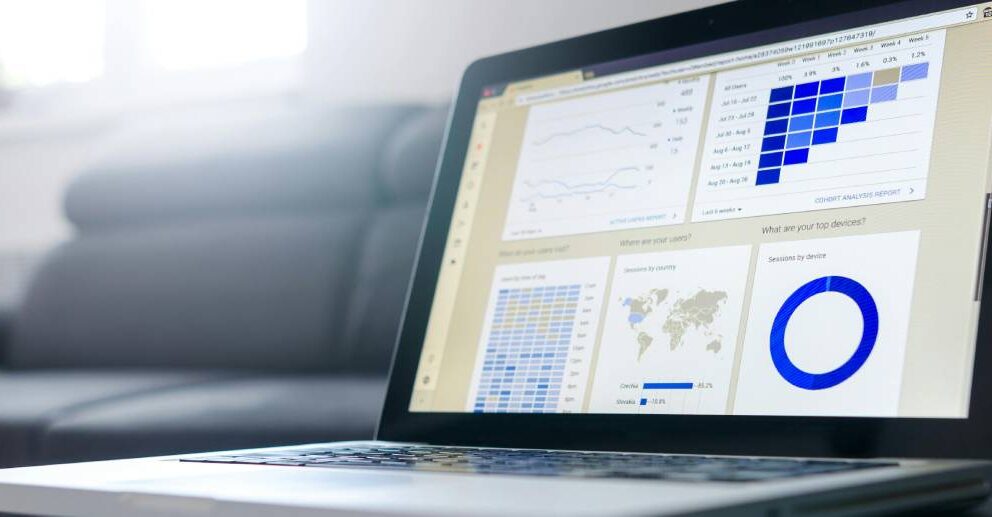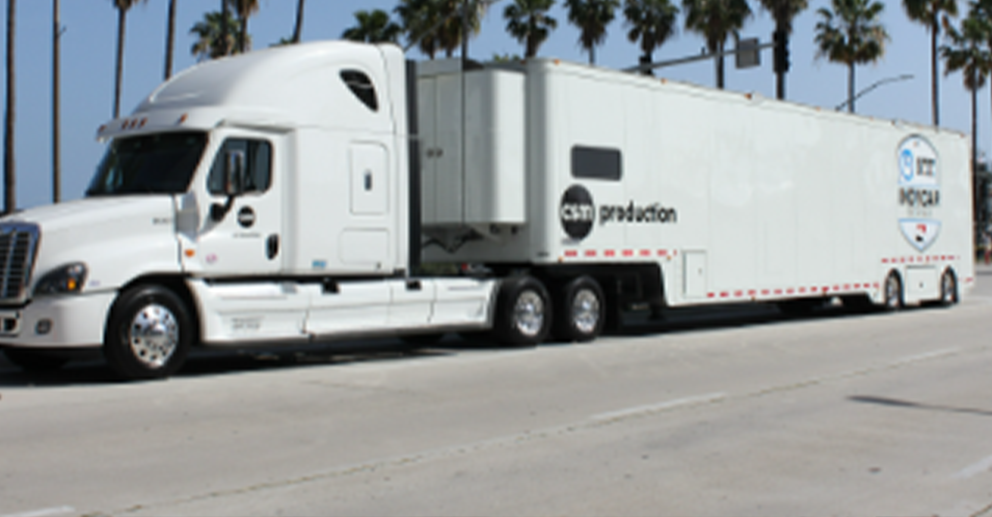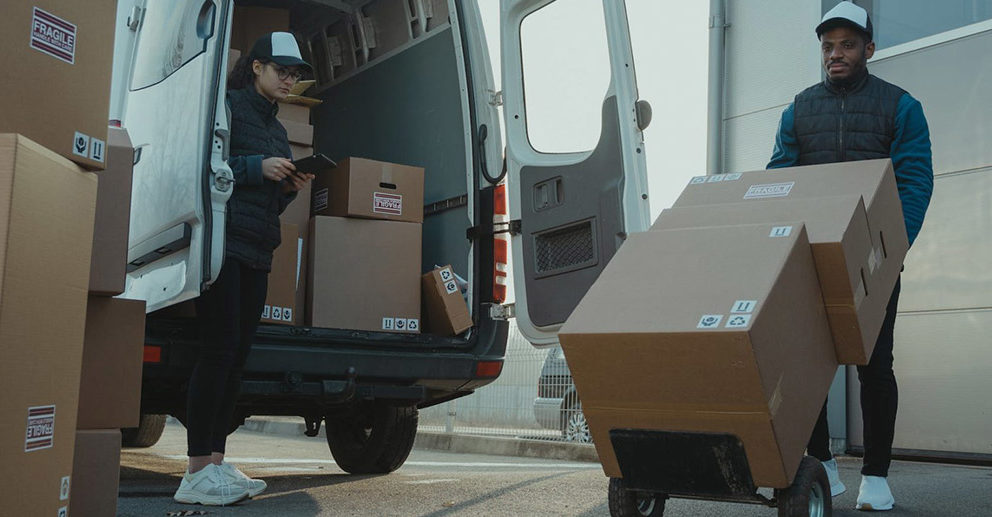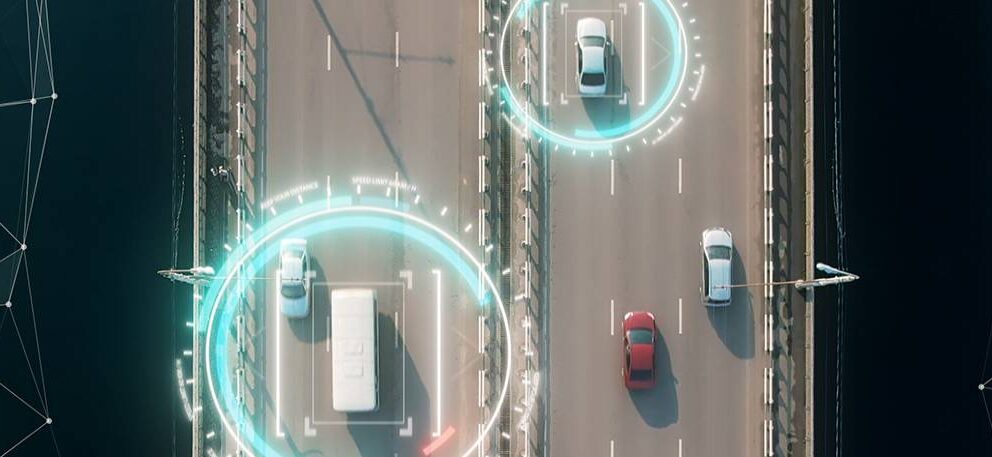As customers expect stellar services that include tracking of shipments, faster delivery times, contactless deliveries, and so on, it has become tough for fleets of all sizes, to cope up with the pressure. But technologies like vehicle tracking systems help to exert proper control over the fleet and opens up access to an extensive cache of data that can be used to improve operational efficiency and meet customer requirements at the same time.
What is Vehicle Tracking?
To put it in a nutshell, vehicle tracking allows monitoring and controlling of vehicles using gadgets like computers, smartphones, tablets, and other devices, on a 24x7 basis with the help of GPS satellites. Vehicle tracking systems (VTS) allow instantaneous tracking of vehicle speeds, monitoring routes they followed, checking stopping points and idling times, recording vehicle histories, and maintaining detailed reports
How do Vehicle Tracking Systems work?
Vehicle tracking systems operate within a loop of GPS, GSM/GPRS, digital maps, and special software. When mobile data devices are mounted on vehicles, they transmit two kinds of information received from satellites – real-time data when the satellite info was transmitted and position of the satellite at that time, along with telemetric information such as temperature to control and communication centres via the GSM/GPRS network. Using advanced software, information is compiled and recorded in a database on servers. Thus vehicles can be tracked via their history and instantaneous positions – it is possible to view all sorts of information gathered from vehicle data.
Who uses Vehicle Tracking?
Vehicle tracking has evolved beyond dots on a map, and one of the most important applications of this technology is fleet management. Every organization that depends on vehicles has a lot to gain from using the Vehicle Tracking System to track its assets. Be it small, medium, or large-sized fleets, when implemented by businesses with fleet operations such as in industries like transportation, construction, specialty services, delivery, and government, Vehicle Tracking System means reduced operational costs, better productivity, and increased efficiency.
How does Vehicle Tracking Software work?
When it comes to vehicle tracking software, there are 4 components involved – GPS satellites, vehicles with GPS tracing devices, wireless networks, and GPS servers. The vehicle tracking device is installed into a vehicle to gather information such as engine management, vehicle diagnostics, date and time, harsh usage, driving hours, excessive idling, speeding, etc. The information that is collected from the vehicle is then stored on the device inside. This data is transmitted via a wireless or cellular network, to a server, which acts as the “cloud platform” to help you access the information on a computer, tablet, or smartphone.
What are the different types of Vehicle Tracking Systems?
Regardless of whether you manage a fleet of vehicles or are simply watching over your teenage kid to ensure they follow the rules of the road, VTS can help to keep tabs on the real-time location of the vehicle at all times. There are two types of vehicle tracking:
Passive Tracking Systems
These tracking systems gather information about the vehicle’s position but don’t transmit that data anywhere. Instead, this data is stored on a hard drive or memory card, which can be accessed as and when required
Active Tracking Systems
These tracking systems are also known as real-time tracking devices, which constantly transmit data to a computer or phone, so you are able to monitor the vehicle round-the-click. This is a great choice if you wish to track a new teen driver or keep an eye on vehicles and their whereabouts on a regular basis. You can see the vehicle’s location and speed whenever you want.
Fleet vehicles generally use a combination of Vehicle Tracking System, to record where the vehicle has been, how fast the driver has gone, pinpointing real-time locations, monitoring idling time, and other important information.
What features should you look for in a GPS Fleet Vehicle Tracking System?
Location tracking in real-time
The very basics of fleet management revolve around location tracking. Pinpointing the precise location of drivers and assets at any given moment lets you respond to emergencies without wasting time (even a minute’s delay can cost someone their life!). It also lets you ensure you send the right vehicles, personnel, and resources to the correct places. Location tracking in real-time also prevents thefts or drivers from using the vehicle for personal reasons. Please remember that not all Vehicle Tracking Systems are actually real-time solutions – the updates sent might be at time intervals of a couple of minutes or even longer. Talk to your provider to find out how often updates are sent, to ensure they are in real-time.
Scheduling maintenance for vehicles
If your vehicles are in poor condition, it means jeopardizing driver safety, delays in completing jobs, loss in revenue, and so on. It is imperative to ensure your vehicles are performing as they should. Vehicle Tracking System lets you take appropriate measures by ensuring that preventive maintenance is scheduled and completed on time. If there are any issues, the system spots them, so prescriptive actions can be implemented. Don’t neglect small issues, because they can swiftly turn into major problems. Vehicle downtime negatively affects business if one or more assets are out of commission for long periods.
Sending customized alerts
Fleet management relies heavily on customizable alerts via Vehicle Tracking System. Getting real-time notifications regarding driver behavior and vehicle diagnostics can help to reduce risk and improve overall efficiency – both factors affect the bottom line. For instance, if you get real-time tracking alerts regarding wasted fuel due to high idle times or bad driving, it helps to determine areas for improvement. Fuel makes up a third of a fleet’s operational costs, and using VTS can decrease it by an average of 13%.
You can set up several alerts such as notifications when assets move during a specified time range, create geofences to ensure vehicles don’t go out of a designated zone, trigger warnings of long idle times and speed, and know when vehicle maintenance is due and so on.
Optimizing and scheduling routes
No one schedules routes using pen and paper anymore! Common issues faced by companies include overlapping routes, drivers taking a long way, not sending the closest vehicle to the next job, or time wasted in communicating with drivers about updates or changes in routes. Vehicle tracking maps out the route at the beginning of every day and schedules them using details such as customer requests, delivery requirements, etc. This feature improves communication, productivity, and customer satisfaction. Optimization is done on the basis of traffic patterns, accidents, road work, bridge heights, and other factors that impact routes. This way you boost response time, reduce mileage and fuel consumption, and get more jobs done in a day. The Aberdeen Group has stated that VTS can decrease vehicle downtime by 15%! Thanks to real-time data about present conditions, you can make smart, informed decisions.
Monitoring utilization of vehicles
You must know which vehicles and how often they are used – it is crucial to understand if you have the right kind and the correct number of vehicles. Using VTS is the only way to compute this metric. Don’t try to do it on a spreadsheet, because that method is outdated and can increase budget outlays for vehicles not in use. VTS provides comprehensive utilization reports so you can process the data and decide about vehicles and assets accordingly.
Keeping tabs on driver behaviour
Predictive analytics help to prevent accidents and promote safe driving behaviour. You must keep an eye on driver behaviour so your business can operate at maximum efficiency and productivity. Please bear in mind it is not a tool to spy on drivers – it helps to improve their performance and keep them safe while ensuring continued growth for your business. VTS provides visibility into a host of driving behaviours such as speeding, rapid acceleration, and harsh braking. Reports can be used to check the start and stop times, in order to validate timecards or even point out padded hours that often result in high labour costs. Use reports and personalized alerts to ensure drivers are held accountable.
What are the common commercial uses of VTS?
When VTS was invented, it was majorly used for military purposes, but nowadays, it is used for a wide range of commercial applications such as:
Managing Fleets
- Keep tabs on the physical location and movements of valuable assets, across wide geographical locations.
- Tracking field service personnel for repair and maintenance jobs, while dispatching the closest field engineer to deal with a client’s problem in a quick and timely manner.
- Mobile field salesmen can easily reach their customers and target clients in unknown areas by getting proper directions. This means they don’t waste time searching for locations.
- Logistics and shipping companies use VTS to monitor goods in transit.
- When it comes to transportation and distribution of refrigerated and perishable goods, optimum temperatures are a must. VTS immediately sends an alert if the temperature range falls below or goes above the pre-determined level
Promoting Safe Driver Behaviour
If instances of distracted, reckless, or aggressive driving are hampering your business, you can easily monitor it via VTS. Be its rapid acceleration, speeding, harsh braking, sharp turns, or not adhering to traffic rules, you get to know which drivers are behaving irresponsibly, and can take action accordingly. You also receive alerts if there are road accidents, mishaps, or emergencies. This leads to improved asset utilization, customer satisfaction, vehicle and driver safety, and a better work environment. The Federal Motor Carrier Safety Administration has stated that Electronic Logging Devices will save more than 25 lives each year.
Providing Timely Medical Services
Through a GPS vehicle tracking system, ambulances and EMS Fleets can be monitored and sent quickly to critical patients, thus providing timely medical facilities and saving lives.
Better Security
Both consumer and commercial vehicles can be equipped with a VTS, so the police can recover stolen vehicles by tracking their movements. Some systems also enable automatic locking of vehicles or engines in case of an emergency. They may also trigger an automated email or message to a phone if the alarm is set off or the vehicle is moved without authorization.
What are the various types of Fleet Vehicle Tracking Devices available?
Fleet vehicle tracking devices are used for boats, trailers, cars, or semi-trucks. They can be broadly classified into three categories:
- Plug-and-Play – As is evident from the name, these trackers are plugged into the OBD-II port in the vehicle. The information is then transmitted to a phone or computer.
- Hardwired – If there is no OBD-II port in the vehicle, the device can be wired directly into it. This option is feasible for older cars and diesel trucks that have a different OBD standard that may not be compatible. They can be concealed if wired anywhere beneath the dashboard, which is beneficial for business owners who want to subtly track and monitor their fleet.
- Battery Operated – If you are looking for VTS that doesn’t draw power from the vehicle itself, then battery-operated devices are what you need.
Which problems does a vehicle fleet tracking system solve?
Businesses that haven’t installed vehicle fleet tracking systems to streamline operations are missing out on a plethora of benefits. Take a look at some of the biggest issues that can be resolved using this technology:
The driver hasn’t arrived yet
Pacifying angry customers about why the driver hasn’t arrived is something that no one wants to deal with! Use vehicle tracking to know precisely where the vehicle is – you can give customers an ETA and take the guesswork out of the equation. You can see where all of your fleet vehicles are at one time, so you can determine who is closest to a particular location. No more missed business opportunities as you were trying to figure out who can get there in time!
Tracking your assets
Fleet tracking technology can work for all mobile assets, not just vehicles. Equipment like trailers and generators can be monitored as well. Create geo-fences around worksites, which boost security for assets. It sends alerts when an asset leaves or enters the property. You get notified immediately about anything untoward after-hours.
Finding out an issue hours later
You get to know that your truck broke down just as you are about to leave office. Even if it happened hours ago, you need to figure out what to do with the shipment, get the vehicle repaired, and work out the scheduling, while likely having to incur overtime costs. With VTS, you can receive notifications about vehicle issues right away, so you can take action without delay. It helps to keep overtime costs down and plan schedules properly. Maintenance personnel can look into the diagnostic trouble codes even before the vehicle is in the shop, so any parts that should be replaced can be ordered right away.
Spending loads on fuel and parts
Noticed that you are spending too much on fuel and replacement parts every month? Drivers tend to drive more cautiously when they know their driving habits are being watched closely. Following the speed limit and reducing harsh braking, decreases wear and tear on vehicles and saves fuel consumption and overall vehicle maintenance costs. Did you know that you can lose up to 2% of your fuel economy for each mile per hour you drive above 55 mph? You know which drivers are making detours or unauthorized stops, as these problematic patterns can be identified right away with vehicle activity alerts.
Knowing about the best and worst drivers in your fleet
Rewarding top-performing drivers will give them an incentive to stay with your company. Similarly, you should also invest in providing training to those who could use improvement. Use the data collected by the vehicle’s sensors to find out who your best and worst drivers are. Parameters like harsh braking, speeding, and idling can be tracked, which lowers maintenance costs, reduces fleet liability, and helps to reward those drivers who practice safe driving behaviour. You can devise customized training programs to coach drivers with troubling patterns on where they need to improve.
Cutting down on emissions
Fleet managers know which vehicles to dispatch to a site for service – they aren’t left clueless about whom to assign jobs to or whether those are being completed on time. Sending the closest vehicle saves time, reduces fuel consumption, and cuts down on emissions. NAVTEQ research shows that vehicle tracking devices can reduce your carbon footprint by up to 21%.
Which types of companies are most suited to use vehicle tracking? Where is vehicle tracking used?
Vehicle tracking systems are used by several industries these days for a variety of purposes. Here are some of them:
Courier or Delivery Services
Customers want to know the location of their package at all times, so VTS comes in handy as the information can be transmitted right from the time of processing at the central sorting office till it is delivered. This information is updated whenever there is a change in the position of the package in the delivery cycle occurs, and customers can keep track of it on their website. They don’t want to call a number or depend on rough estimates – they wish to know when their package is expected to arrive. This particular industry is an important link between the seller and buyer and both parties rely on it for efficiency.
Logistics & Shipping
This type of business involves large fleets, so every vehicle and driver should be tracked at all times. They supply hundreds, if not thousands of recipients every week, and any delay or drop-in service can have a massive impact on the entire operation, lead to losses, and damage credibility. For instance, if they are supplying pharmaceutical goods, but the driver misses a delivery, countless people have to go without the medication they need at a particular time. Likewise, drivers carrying food or clothes for a business can cause real issues if they are late, leaving said companies unable to cater to their customers. VTS allows fleet managers to monitor driving speeds, routes, fuel consumptions, and chalk out journeys to avoid heavy traffic.
Construction Firms
Construction firms equip their vehicles with VTS, in case of intruders attempt to remove them from a job site. These systems can also ensure that drivers carrying loads from one site to another don’t waste time or take out-of-the-way/unsafe routes. Knowing that such technology is in place can provide drivers with the proper motivation to minimize wasted time and obey safety regulations. Tracking this data also helps to invoice customers accurately, as it shows the number of hours a vehicle has been used over time.
Public Transport
Trains, buses, and taxis have to adhere to tight schedules. Customers plan their days and activities around public transport, and if there are disruptions or delays, their route can get affected big time. VTS helps businesses stay connected with drivers and apprises customers of potential delays well in advance. Companies like Uber use this technology extensively to provide customers with the precise location of vehicles, driver details, ETA, and so on.
How should you choose a vehicle tracking provider?
Before you go ahead and choose a vehicle tracking provider, make sure you consider the following criteria:
Passive and Active Tracking
As mentioned above, the receiver unit simply stores the information in passive tracking systems, which are then downloaded onto a server only after the vehicle returns. This system gathers information every 30 seconds and requires lots of memory to store data. Storage capacity is variable – some solutions store data for a week, while others can do so for 60 days. There is a chance of data loss if the vehicle stays out of the coverage for a long period and the data exceeds the memory capacity. In such cases, new data overwrites the old one – the latter is lost forever.
Based on a predetermined frequency, it continuously updates data into the server. Depending upon the provider, the frequency of data updates can vary from 15 seconds to once a day. Due to the consistent updating of data, there is no risk of loss.
Fleet operations usually require both types of trackers as real-time locations and vehicle history are equally important.
Dispatching
Respond to emergencies or re-route vehicles if there is a roadblock up ahead, thanks to effective dispatching. Since you can monitor the status of each vehicle and the location of drivers round-the-clock, it allows you to take action quickly and manage day-to-day operations in a more streamlined manner.
Notifications
No longer do fleet managers have to remain glued to their desks to ensure vehicles are following the correct route or there is no emergency. They can set up the VTS to send alerts and notifications to their smart devices. Alerts can be initiated for excessive speeding and idling events, entering or exiting specific geographic areas, and so on.
Accurate Mapping
The mapping features of a vehicle tracking device let you zoom to street levels. You can access views like street maps, satellite, and bird’s eye. Up-to-date mapping helps to plan routes and track vehicle locations far more efficiently.
Preventing Thefts
What if an intruder enters your facility while the guard is catching a few zzzs and quietly makes off with a vehicle? Installing a VTS ensures that even if a theft does occur, it is very easy to pinpoint the location of the vehicle and recover it quickly.
Are vehicle tracking systems legal?
VTS ensures you can monitor assets with minimal effort. Be it concerned parents worried about their teenager’s driving habits or fleet managers wanting to monitor driving behaviour, implement route mapping, and keep tabs on asset utilization and meet targets, vehicle tracking systems are great options. It is legal to use vehicle tracking technology on assets that you own, but before you utilize it on vehicles not owned by you, make sure you conduct research on current federal, state, and local laws.
Conclusion:
Anstel’s Vehicle Tracking Systems like Connected Fleet and OBD-II devices can not only pinpoint the location of assets in real-time, but also ensure better visibility across the fleet to monitor metrics like speed, engine performance, idling time, fuel usage, etc., use predictive analytics to keep risky driving behaviour in check and prevent accidents, provide flexibility while route planning, streamlining operations, help to make smart and data-driven decisions, prevent theft and unauthorized usage of assets, and lastly, encourage green driving practices.

 Global
Global Australia
Australia India
India




